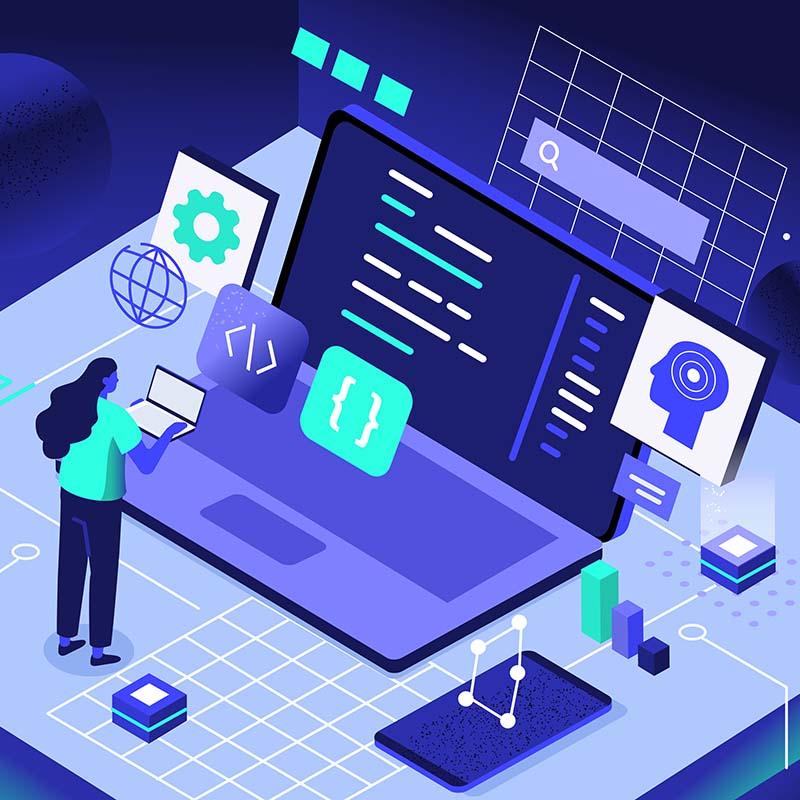In the real world, infrastructure is railroads, highways and power grids. In the digital world, infrastructure is servers, networks and data centers.
Rajiv Ramaswami is a man of both worlds. He grew up on India’s national railway system, which employed his father and mother. As a graduate researcher, he envisioned optical networking tools for the emerging information superhighway. In the private sector, he led divisions of technology infrastructure stalwarts like Cisco and VMware.
Now he’s the CEO of Nutanix, which specializes in creating digital equivalents of technology infrastructure like servers, switches and networks. In an interview with The Forecast by Nutanix, Ramaswami talked about his life and career as an infrastructure guy.
Of course, a big part of it is supplying digital infrastructure to Nutanix customers. And it extends to his approach to philanthropy, where he’s helping India improve its educational infrastructure, one school at a time.
Ultimately, his infrastructure game comes down to being a team player who finds there’s more to life than scoring wins in the fields of commerce.
A Master of Digital Infrastructure
Ramaswami’s appointment as Nutanix CEO in December 2020 put him right where he needed to be.

The digital technology landscape is bulging at the edges. Machine learning and artificial intelligence are expanding the functionality of watches, homes, cars, refrigerators, factories — pretty much anything big enough to house a microprocessor.
His job is to help companies get smarter about using digital technology to mine these and many more opportunities at the network edge and throughout their businesses.
“Enterprises are all going more and more digital,” he said. “It could be retail and online shopping. It could be healthcare with remote telemedicine. It could be financial services and robo-advising. Regardless of the industry, they have to rethink how they do business, build applications and support their customers, stakeholders and partners.”
And they all need a foundation of rock-solid digital infrastructure.
“Building an infrastructure that supports all these applications becomes more and more mission critical,” Ramaswami added. Nutanix’s core technology is hyperconverged infrastructure (HCI), which virtualizes the operations of data center hardware. With HCI, companies can spin up virtual servers and networks, and scale them quickly, enabling rapid growth at a low cost.
Companies can use HCI to build hybrid environments that mix and match the benefits of private and public cloud technologies. Nutanix is pushing that envelope with multicloud tools that allow rapid shifting of workloads, apps and functions between private and public clouds.
That kind of flexibility will be central to the rise of edge computing, which moves more power to the network edge via phones, sensors, cameras and anything else that captures data.
“The future is around enabling all of that to happen seamlessly, providing infrastructure and tools that allow our customers to go digital at their own pace,” Ramaswami said.
Connecting Infrastructure and Customer Focus
Ramaswami’s connection with infrastructure has deep roots, tracing to his undergrad days at Indian Institute of Technology, Madras, and his master’s and doctoral research at University of California, Berkeley. He learned the value of customer focus in the private sector, climbing the leadership ranks at Silicon Valley titans like Cisco, Broadcom and VMware, where he was Chief Operating Officer of Products, Cloud Services.
At Cal-Berkeley and IBM Research, where he did much of his doctoral work, Ramaswami found new ways to apply optical networking technologies. Fiber optics technologies became key infrastructure components supporting the explosion of internet technologies. That paved the way for cloud computing and companies like Nutanix.
Transitioning from a researcher to a product guy required a shift in perspective.
“When you're doing research, you are thinking bottoms-up. You’re not thinking about the end user,” he said. “When you're actually building a business, you have to think about customers.” That means taking the time to discover their problems and finding opportunities for solving them, as well as understanding the market and competitive dynamics.
Decades in the private sector taught him that product development must go beyond the customer’s immediate concerns. What will they need next week and next year?
“You also have to ask what the future could look like,” he said. “You have to start there and then work your way into conceiving of a product and conceiving of a platform to support it.”
Supporting Another Kind of Critical Infrastructure
Rising to the executive suite in Silicon Valley giants gave Ramaswami an opportunity to return to his homeland and help develop infrastructure for a different kind of customer: children who need better schools.
“I fundamentally believe that education unlocks opportunities,” he said. “It doesn't matter what portion of society you're in. If you can get an education, then you can build a career for yourself and a future for your family.”
That’s true across India, where poverty is pervasive despite the remarkable strides of recent decades. Over the years, Ramaswami gave to many education charities until he found one that fired his desire to take more direct action.
“This one is focused on one of the hard problems, which is actually to build the schools,” he said. “That's a lot of work because we have to go out there, work with the local governments and scope out things. We have to get the construction done. And then we have to work with the governments to make sure the schools operate and that the staff has funds to keep operating.”
So far, the organization has built 50 schools, all with volunteer labor. The schools serve small towns and rural areas scattered across the country.
“You can imagine the level of effort it takes to supervise construction there” with an all-volunteer workforce, he said. “That is very appealing to me.”
The COVID-19 pandemic drove many schools to use remote learning technologies.
“They are going digital because students couldn't come to schools anymore.” There’s a lot more work to do, but volunteers are working on getting the digital infrastructure in place. It’s not exactly like the challenges confronting Ramaswami’s commercial customers, but it’s in the ballpark.
Finding Meaning Beyond Infrastructure
Ramaswami spent much of his childhood in multiple cities across India because his parents worked on one of his homeland’s most important infrastructure components: the national railroad. Their jobs required frequent transfers and resulted in multiple school experiences for him and his sister.
“I think that certainly developed a wanderlust in me,” he said. “I speak like three Indian languages just from that experience of moving around.”
As he grew into adulthood, he picked up an appreciation for bridge (the card game) and competitive tennis.
“I got into bridge when I was a college kid,” he recalled. “There were two things about it that really intrigued me. First, it's a thinking person's game. It’s not a blind game and there's a lot of combinations. Second was the social camaraderie.”
Ramaswami isn’t the kind of guy who goes on solo backpacking trips in the High Sierra. He wants to be around people. The teamwork of playing doubles tennis appeals to his social and competitive sides.
“Whether you're playing doubles tennis or whether you're playing bridge, it's actually very important that you work together as a team,” he said. “When you do these team sports, you learn and then start appreciating that people have to come together to make things happen.”
Ramaswami sees a parallel between his passion for tennis and his rise to CEO of a company that sells digital infrastructure.
“You learn to play very hard and give it your best when you're out there on the court,” he said.
Still, building a life has to transcend all that. He raised a family in the United States. He and his wife enjoy traveling the world.
“It’s what you do off the court that defines you as a person,” he concludes.
Tom Mangan is a contributing writer. He is a veteran B2B technology writer and editor specializing in cloud computing and digital transformation. Contact him on his website or LinkedIn.
© 2021 Nutanix, Inc. All rights reserved. For additional legal information, please go here.















